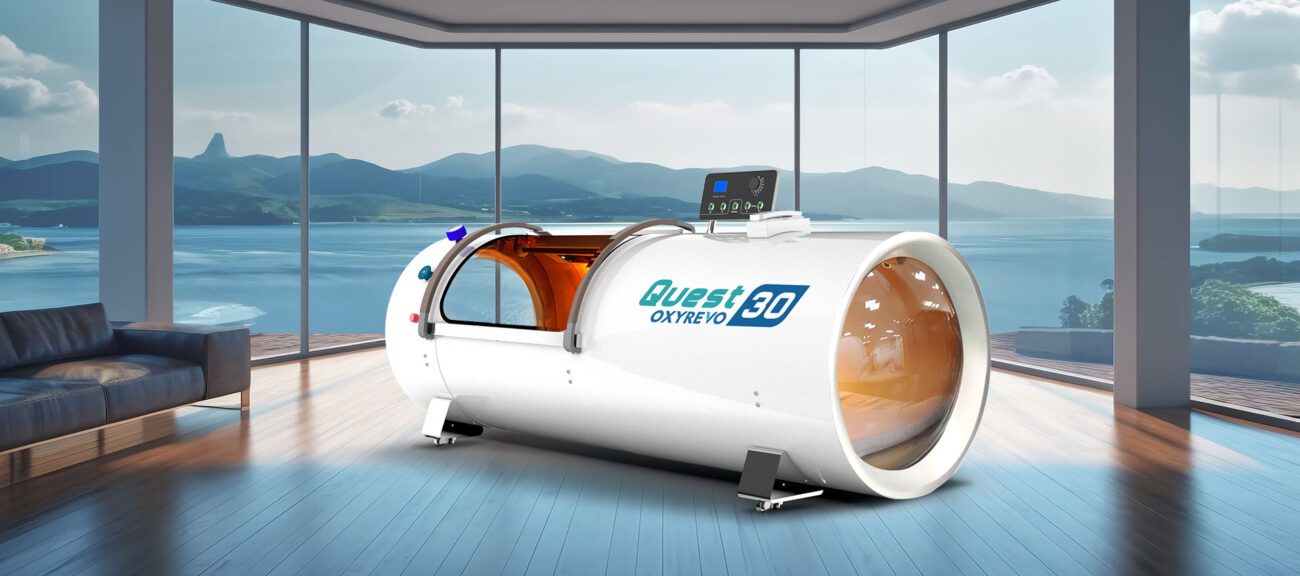

Hyperbaric Oxygen Therapy (HBOT) is a rising star in the world of longevity medicine, offering benefits that extend from tissue repair to cellular rejuvenation. By delivering 100% oxygen in a pressurized chamber, HBOT enhances oxygen absorption far beyond normal atmospheric conditions, promoting profound biological effects.
How HBOT Works
HBOT leverages controlled oxidative stress to stimulate the body’s natural defenses. Here’s how:
- Enhanced Oxygen Delivery: Pressurization allows oxygen to dissolve directly into plasma, cerebrospinal fluid, and tissues, even in areas with poor circulation.
- Hormetic Stress Activation: HBOT induces a mild oxidative stress, prompting the body to ramp up its own antioxidant defenses, including superoxide dismutase (SOD). This process reduces inflammation, promotes DNA repair, and activates regenerative pathways.
- Stem Cell Mobilization: HBOT stimulates the release of bone marrow-derived stem cells, vital for tissue repair and regeneration.
- Anti-Inflammatory Effects: By modulating cytokine levels, it decreases pro-inflammatory markers like IL-6 while increasing anti-inflammatory molecules such as IL-10.
Key Benefits for Longevity
- Cellular Repair and Rejuvenation:
- HBOT reduces senescent cell burden and increases telomere length, addressing key markers of cellular aging.
- It improves mitochondrial function, boosting energy production and cellular health.
- Cognitive and Neurological Health:
- HBOT has shown promise in enhancing cognitive function and neuroplasticity, making it a valuable tool for neurodegenerative diseases and recovery from brain injuries.
- Increased cerebral blood flow reduces neuroinflammation and oxidative stress.
- Cardiovascular Health:
- HBOT supports endothelial function, improves cardiac perfusion, and enhances vascular resilience.
- It may reduce the risk of cardiovascular events and improve recovery after incidents such as heart attacks.
- Physical Performance and Recovery:
- A recent clinical trial demonstrated improved VO2 Max and cardiovascular function in older adults after a 12-week HBOT regimen, highlighting its potential for enhancing physical capacity and endurance.
The Antioxidant Debate
One key discussion surrounding HBOT is its interaction with antioxidants:
- HBOT works by inducing oxidative stress, which stimulates the body’s own antioxidant systems. Supplementing with external antioxidants during therapy may blunt this hormetic effect, potentially reducing HBOT’s benefits.
- However, in patients with compromised antioxidant responses (e.g., due to chronic illness), careful supplementation may be necessary before starting HBOT to ensure safety and efficacy.
IHHT: A Future Exploration
Intermittent Hypoxia-Hyperoxia Therapy (IHHT) is a complementary innovation to HBOT, involving alternating cycles of oxygen-rich and normoxic (or slightly hypoxic) states. This cycling enhances adaptive responses such as:
- Activation of HIF-1α (Hypoxia-Inducible Factor), which promotes vascular remodeling and metabolic efficiency.
- Improved cellular resilience and repair.
While IHHT is an exciting development, its broader application and comparison to traditional HBOT protocols require further study. Future exploration of IHHT could uncover additional longevity benefits.
HBOT’s Role in Personalized Longevity
As research evolves, HBOT is poised to become a cornerstone in longevity medicine. By addressing cellular repair, reducing inflammation, and improving systemic health, HBOT offers a multi-faceted approach to aging. Whether used for recovery, prevention, or enhancement, it provides a foundation for optimizing healthspan and quality of life.
For those considering HBOT, working with experienced practitioners and adhering to evidence-based protocols ensures safe and effective outcomes. As the science of longevity progresses, HBOT’s integration with other interventions—such as diet, exercise, and advanced diagnostics—will redefine what it means to age gracefully.
By Dr. Thomas Paloschi MD



